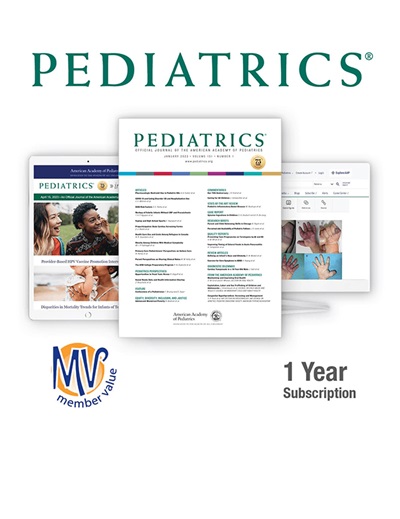儿童保育和上学的医疗与非医疗免疫豁免:政策声明。
IF 6.4
2区 医学
Q1 PEDIATRICS
引用次数: 0
摘要
预防传染病的常规儿童免疫接种是我们公共卫生基础设施的一个组成部分。它们通过减少疫苗可预防疾病在社区的传播,为接种疫苗的个人提供直接保护,并为无法接种疫苗的儿童和成人提供间接保护。所有50个州、哥伦比亚特区和波多黎各都有规定,要求将免疫证明作为儿童保育和上学的条件,作为一项公共卫生战略,以保护这些环境中的儿童,并作为促进儿童照料者及时接种疫苗的机制。虽然所有的州和哥伦比亚特区都有机制可以免除学校学生因医疗原因而进行的特定免疫接种,但大多数州也有各种各样的法规和法律,允许非医疗原因的豁免。美国儿科学会(AAP)支持儿童保育和学校的免疫认证,作为为这些场所的参与者和员工提供安全环境的一种有效手段。美国儿科学会还支持针对每个儿童确定的特定免疫接种的医学指示豁免。美国儿科学会主张取消非医疗豁免的免疫接种,因为这违背了最佳的个人和公共健康。本文章由计算机程序翻译,如有差异,请以英文原文为准。
Medical vs Nonmedical Immunization Exemptions for Child Care and School Attendance: Policy Statement.
Routine childhood immunizations against infectious diseases are an integral part of our public health infrastructure. They provide direct protection to the immunized individual and indirect protection to children and adults unable to be immunized by reducing spread of vaccine-preventable diseases in the community. All 50 states, the District of Columbia, and Puerto Rico have regulations requiring proof of immunization as a condition for child care and school attendance as a public health strategy to protect children in these settings and to secondarily serve as a mechanism to promote timely immunization of children by their caregivers. Although all states and the District of Columbia have mechanisms to exempt school attendees from specific immunizations for medical reasons, the majority also have a heterogeneous collection of regulations and laws that allow nonmedical reasons for exemption. The American Academy of Pediatrics (AAP) supports certification of immunization to attend child care and school as a sound means of providing a safe environment for attendees and employees of these settings. The AAP also supports medically indicated exemptions to specific immunizations as determined for each individual child. The AAP advocates for the elimination of nonmedical exemptions from immunizations as contrary to optimal individual and public health.
求助全文
通过发布文献求助,成功后即可免费获取论文全文。
去求助
来源期刊

Pediatrics
医学-小儿科
CiteScore
12.80
自引率
5.00%
发文量
791
审稿时长
2-3 weeks
期刊介绍:
The Pediatrics® journal is the official flagship journal of the American Academy of Pediatrics (AAP). It is widely cited in the field of pediatric medicine and is recognized as the leading journal in the field.
The journal publishes original research and evidence-based articles, which provide authoritative information to help readers stay up-to-date with the latest developments in pediatric medicine. The content is peer-reviewed and undergoes rigorous evaluation to ensure its quality and reliability.
Pediatrics also serves as a valuable resource for conducting new research studies and supporting education and training activities in the field of pediatrics. It aims to enhance the quality of pediatric outpatient and inpatient care by disseminating valuable knowledge and insights.
As of 2023, Pediatrics has an impressive Journal Impact Factor (IF) Score of 8.0. The IF is a measure of a journal's influence and importance in the scientific community, with higher scores indicating a greater impact. This score reflects the significance and reach of the research published in Pediatrics, further establishing its prominence in the field of pediatric medicine.
 求助内容:
求助内容: 应助结果提醒方式:
应助结果提醒方式:


